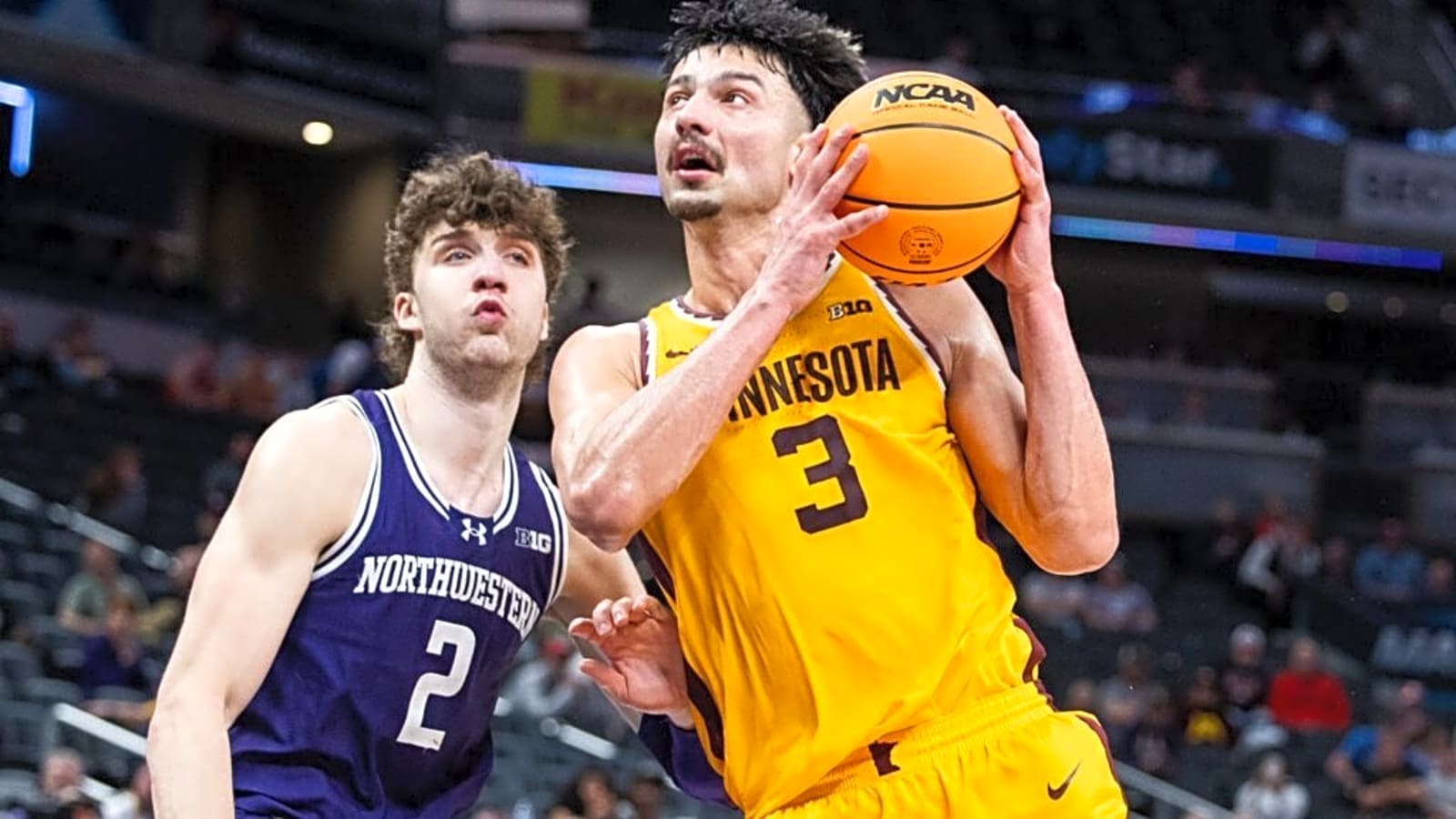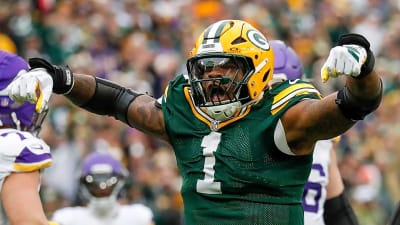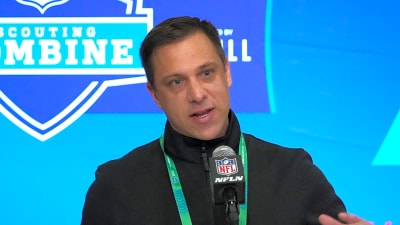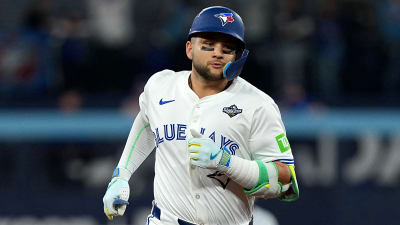
When yoy think of Minnesota Golden Gophers basketball, there have been plenty of individual stars throughout their history. The Barn at Williams Arena has plenty of names honored within its walls. However, the Gophers haven’t quite had team success in several decades. They have only made six NCAA trips since 2000. Not to mention, they haven’t won the Big Ten since the 1980s.
Still, there have been plenty of high-caliber players who have suited up for the Gophers throughout their history. A lot of the names on this all-time Minnesota team are from many, many years ago, but they are still historic players. Let’s dig a little deeper into the Gophers roster.
All-Time Minnesota Golden Gophers Basketball Roster
Point Guards
To kick off the point guard, you have to go back to the end of the 1940s for the first player. Myer Skoog (1948-1951) was listed as a forward, but at just 5-11, he was clearly a guard. In his three seasons, he was a 15.2 point-per-game scorer. He was a first-team All-Big Ten player in his junior and senior seasons. His first season saw the Gophers have their best season during his career, as they went 18-3 and finished second in the Big Ten. From Skoog, the Gophers had another point guard make his presence known right after his departure.
Charles Mencel (1951-1955) arrived in Minneapolis ready to give his all to the Gopher program. The team’s success was still scarce, but that didn’t stop Mencel from leaving his mark. A four-year player, Mencel made a mark as it was still an era where freshmen weren’t allowed to play, but Chuck did. Mencel set a precedent during his run, as he was a three-time First-Team All-Big Ten player and the league’s MVP in 1955. Not to mention, he averaged more than 13 points per game in each of his seasons. A career 16 point-per-game scorer, Mencel left a strong mark of 1,391 career points when he was done in Minneapolis.
Likely the best point guard in Minnesota basketball history, Bobby Jackson was a phenomenon for the Gophers in the 1990s. He delivered some real results for the Gophers, as they reached the 1997 Final Four and won the Big Ten championship. Jackson came from the junior college ranks and made a career for himself in his two seasons at Minnesota. Sure, the accomplishments were later vacated, but Bobby was outstanding; he was All-Big Ten, the Big Ten Player of the Year, and the Defensive Player of the Year in the league in 1996-97. Not to mention, he was also named a consensus All-American.
Shooting Guards
If you want a superstar position on this all-time Minnesota Golden Gophers roster, look no further than the shooting guard spot. Leading this group off is Lou Hudson (1963-1966). An eventual top-five NBA Draft pick, Hudson played 65 career games as a Gopher and finished with a career average of 20.4 points per game along with 8.9 rebounds per game. That’s a great mark for a shooting guard. The man known as simply “Super Lou” earned All-Big Ten honors during his junior campaign, when he had his best season with 558 points and 247 rebounds. Hudson was a part of the first black recruiting class in Gopher history. It is famously known that North Carolina’s legendary coach Dean Smith really wanted Hudson, but he chose the Gophers.
Trent Tucker was the next decade’s top shooting guard for Minnesota. Tucker (1978-1982) was able to help lead Minnesota to the Big Ten title during his senior season. That was the first for the Gophers since 1972. It was also the school’s most recent title, with the 1997 championship vacated. After scoring under 10 points as a freshman, Tucker built himself as a reliable scorer. He didn’t quite get the individual accolades like Hudson, but Tucker was an important player for Minnesota. Hence, his No. 32 hangs in the rafters at Williams Arena.
Sure, Amir Coffey wasn’t always flashy. Nonetheless, he was reliable for Richard Pitino’s Gophers. Coffey was a pretty prominent recruit coming out of high school. He lived up to being reliable as he was a day-one starter for Minnesota. He also helped lead the Gophers to the NCAA Tournament in two of his three seasons, the last of which was the 2018-19 season that saw the Gophers reach the second round. An injury during his sophomore season limited him to just 18 games. But when it was all said and done, after his junior season, Coffey left Minnesota as a two-time Big Ten honoree. Not to mention, he scored over 1,200 points, had 331 rebounds, and nearly 280 assists.
Small Forwards
With Mencel at point guard, Dick Garmaker was able to deliver quite a memorable two-year run with the Gophers. Garmaker scored over 20 points per game in both of his seasons in Minneapolis. Despite only playing in 22 games in both seasons, Dick was a big-time scorer in the 1950s. In his senior campaign in 1954-55, Garmaker finished the season with 533 points and was a 1st-team consensus All-American. Garmaker was a legit superstar for Minnesota during that time. The Gophers finished that season ranked 11th in the country. Despite starting as a junior college player, Dick more than earned his place on this Minnesota roster.
Quincy Lewis (1995-1999) was more of a background role player when the Gophers made their run in 1997. However, he was still a very important player in Minnesota history. By his senior year in 1998-99, Lewis was ready to deliver a massive swan song. He finished third overall in the Big Ten in total points that season, but had the best average of all players in the Big Ten. Yes, better than Big Ten player of the Year Mateen Cleaves. Lewis was dedicated, and his scoring output for his career showcased that as he left Minnesota with 1,614 points.
If you want a rebounding machine, look no further than Jordan Murphy. His size certainly didn’t seem like he could be as great a rebounder as he was, but Jordan more than delivered during his career. Murphy built towards his elite rebounding run during the Richard Pitino tenure (2015-2019). Mruphy was not only a great rebounder, but he was also a very reliable scorer. He finished as a career 13.5 point scorer and 9.8 rebounds per game. He led the Big Ten in rebounding both in 2017-18 and 2018-19. Murphy had a great career and left Minnesota with 1,802 points and 1,305 rebounds. That rebound mark is still third all-time in Big Ten history.
Power Forwards
The 1970s were a great era for big men in Minnesota basketball history. Kicking it off was power forward Jim Brewer (1970-1973). He exploded in his first season, finishing with 16.6 points and 13.8 rebounds per game. He took a bit of a step back in his second season, but as a senior, Brewer earned national recognition as a 2nd-team All-American. Jim made his biggest impact during his first season as the Gophers won the Big Ten and made the NCAA Tournament for the first time in program history.
The success of Brewer led to other big-name bigs following in his footsteps. Kevin McHale came in and was born to be a star. McHale (1976-1980) wasn’t afraid to put his name out there in the Big Ten, even with the likes of Magic Johnson being in the league. He was a great scorer and rebounder in the Big Ten, finishing with an average of 15.2 points and 8.5 rebounds during his four-year career. McHale was All-Big Ten in both 1979 and 1980. He still sits second in Minnesota history in scoring and rebounds, further cementing his place on this Minnesota roster. He only added to his Hall of Fame career in the NBA.
Willie Burton (1986-1990) had a great run at Minnesota. A star player from Detroit, Michigan, Burton went to Minnesota and played for Clem Haskins. Burton was able to succeed under Haskins, as he was part of two Sweet 16 teams for the Gophers, including the 1990 Elite 8 as a senior. He wasn’t just a role player, as Willie scored 1,800 career points in a Gopher uniform. He’s also the most recent player in Minnesota history to have his jersey retired.
Centers
Mychal Thompson, yes, Klay Thompson’s famous dad, was a Gopher. Mychal was a stud. A four-year player from 1974-1978, Thompson was able to thrive at the center position. The 1978 1st overall pick in the NBA Draft had a standout career in Minneapolis. He finished with a career average of 20.8 points and 10 rebounds. He was also a two-time All-American. Three times, he was an All-Big Ten player. Thompson’s career scoring average is still top-25 in Big Ten history.
Even after Thompson was gone, Minnesota had another ace up its sleeve. Randy Breuer stepped in, and at 7-foot-3, he was a menace. Not only could Randy score, but he was a great shot blocker, which should be expected from a player of his stature. He was a leader in the Big Ten in blocks throughout his career. Even though he was a defensive force, Breuer could score the basketball just fine. He had over 450 points in each of his final three seasons, including a best 593 points during his senior campaign in 1982-83. A two-time All-Big Ten player, Breuer remains 11th All-Time in the Big Ten in blocked shots and is the Minnesota leader all-time.
Joel Przybilla was the next potential big-man star for Minnesota basketball when he arrived on campus in 1998. The McDonald’s All-American and Minnesota Mr. Basketball, had two respectable seasons in the Big Ten. He started 26 of 28 games as a freshman, but he had a much more of an impact as a sophomore during the 1999-2000 season. He was top-10 in scoring that season and was second in the Big Ten in blocked shots. Had he stuck around for more than just two seasons, Przybilla could’ve been one of the best big men in the Big Ten. Still, he is one of the more recent memorable centers the Gophers have had.
Honorable Mention
These four honorable mentions had vastly different careers, but the four combined for six All-Big Ten Honors. Kris Humphries earned the highest praise as he was both All-Big Ten and the Big Ten Rookie of the Year in 2003-04. He also had 629 points and 294 rebounds in his lone season in Minneapolis. Had he been more than a one-and-done, who knows what Humphries could’ve done in the Big Ten and even nationally.
Nate Mason was a reliable point guard during the peak of the Richard Pitino years at Minnesota. He helped lead the Gophers to the NCAA Tournament in 2017. The effort that season also allowed Mason to earn All-Big Ten honors. Daniel Oturu was part of a trio of Big Ten big men that didn’t get any national love during their era in college basketball. His 349 rebounds during the 2019-20 season were simply incredible to watch. To think he was so good in only two seasons in college. Not bad for the Minnesota native.
The final honorable mention is Dawson Garcia. After spending his first two seasons of college basketball between Marquette and North Carolina, Garcia returned home to Minneapolis. He was a major bright spot for a Minnesota program that had completely lost its way. Despite not making the NCAA Tournament, nor any real run in the Big Ten, Dawson played like one of the best all-around players in the conference. He took home a Big Ten honor in each of his three seasons. Not to mention, he finished his final season in the top six in the league in scoring, with an average of around 19 points per game.
Check Out Other All-Time Big Ten Teams
More must-reads:
- Kentucky finally plays up to potential in win over No. 22 St. John's
- Top five studs and duds so far this season in men's college basketball
- The '2004-05 NFL passing leaders' quiz
Customize Your Newsletter
 +
+
Get the latest news and rumors, customized to your favorite sports and teams. Emailed daily. Always free!








